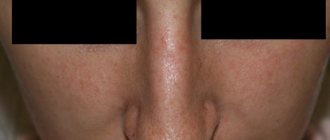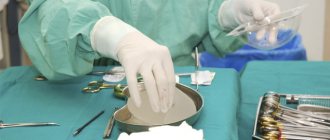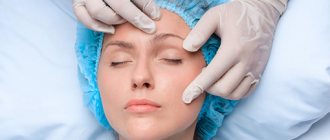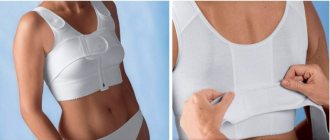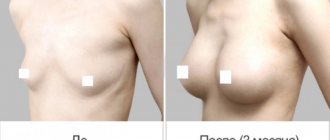Mammoplasty is one of the most spectacular plastic surgeries. The changes in the before and after photos will not leave anyone indifferent. Surgeons at the GALAXY Beauty Institute are ready to help every woman create the breasts of her dreams. Well, patients, accordingly, are required to follow all the rules of rehabilitation after surgery for as long as required. Then the final result will be truly stunning.
- Why is it important to follow all recommendations in the postoperative period?
- First week of rehabilitation
- Compression garments after mammoplasty
- Limitations after mammoplasty
Factors to consider before breast augmentation
After breast augmentation, your body's recovery time will depend on several factors, including: Health . Your health and any medical conditions will be an important factor during your recovery. Women who are more active and physically fit report faster recovery from surgery, as do those who eat a healthy, balanced diet. Pain tolerance is also important, because... pain often influences how a person perceives recovery. Some women need pain medications for longer or in different doses.
Pregnancy . Women who survive pregnancy also recover faster. Natural hormonal changes during pregnancy stretch the skin and breast tissue. This reduces discomfort and allows for a larger implant and faster recovery.
Breast lift . A breast lift in addition to implants will prolong recovery time, change the risk of complications after surgery, and change some care recommendations.
Implant size . Larger implants require more surgical time due to increased surgical incision. This may increase discomfort and lengthen recovery time.
Placement of implants . Implants placed over the muscles do not require cutting out the pectoral muscle, so patients recover faster and experience less post-operative pain. The final placement of the implants is much faster. Underarm implants, for obvious reasons, often result in longer recovery times and more post-operative pain. The final formation on the breast occurs more slowly, and the muscles over the implant stretch to accommodate the new shape.
Massage . Your surgeon may recommend using these techniques to reduce pain, help the implant go into place faster, soften the breast, and ultimately reduce the time it takes to achieve the final result.
With these factors in mind, let's talk about surgical recovery timelines and what you can expect.
This is not dangerous
Many women worry that future breast reconstruction may make screening more difficult. But for this purpose, neither a flap of one’s own tissue nor an implant interferes, especially since CT or MRI, rather than mammography, is often used to control the disease. But with one condition: all studies must be carried out by qualified specialists in a specialized oncological institution; it is better to do them in the same place and with one specialist, so that it is possible to compare the picture over time. It is also important to observe the required frequency of research (every six months, a year, two, three and beyond).
Article on the topic
Corporate conspiracy or personal decision? Expert on mastectomy, Jolie and cancer
Day of surgery
These are exciting but worrying times. The surgical and recovery staff will meet your needs, but you will also need the support of a family member or close friend as the anesthesia limits your mobility. You may also experience post-operative pain and nausea. Although your surgical team will use a variety of techniques to reduce discomfort, make sure your “support person” provides most of your needs on this first day.
For example, he or she should make sure you take your medications as prescribed by your surgeon and help you with some basic needs. Additionally, the day of surgery can be a blur for some and scary for others. You may wake up feeling regretful, afraid, or in pain and say strange things while under anesthesia. In addition, memory lapses may occur. This is all normal and that is why you need a “helper”.
First three days
The products used during surgery will have worn out by this time, so you may feel pain. Control this with prescribed medication and take it as directed because the pain will be easier to relieve before it becomes severe.
Your "helper" should be available, especially if you have children. You will need help with childcare and certain activities. Activity should be limited to walking at a slow pace and your heart rate should be steady.
The implants may appear tall, distorted, and more like pectoralis muscle than breasts. The swelling is at its worst at this time and will slowly decrease. Bruising is possible. After surgery, you should wear a light bra or surgical dressing.
Consequences
The patient may experience several discomforts.
Pain
Tolerable, but unpleasant sensations may occur at first. The pain syndrome is easily relieved with painkillers.
Edema
It is this syndrome that causes the greatest discomfort. Depending on personal indicators, the mammary gland itself and even the abdominal area may swell. Minor swelling will subside within a few weeks, after which the new breasts can be assessed.
To reduce swelling, you will have to wear compression underwear constantly, do not overheat, and monitor the amount of fluid consumed.
Bruises and bruises
Rarely appear. It happens in women with sensitive, thin skin. Special absorbable ointments can easily get rid of such troubles.
Since mammoplasty is a serious surgical operation, the doctor prescribes various medications for the first time of rehabilitation.
First week
Most women do not need pain medications during recovery. You will slowly return to normal daily activities, but follow your surgeon's instructions. You can resume moderate walking, light desk work, etc. Sexual activity will be limited, as will any activity that increases your heart rate. Some women who work in office may return to work.
As the swelling decreases, you will see changes in shape. The skin will stretch and you may feel itchy as a result. Bruises will heal at this stage, but report any new bruises to your surgeon.
Postoperative depression is expected at this stage. Over the last seven days, your body has had to adjust to the surgery and you have been taking some medications and limiting your daily activities. You also have to deal with the emotional changes that come with seeing your body in a different light. Know that you are not alone and that many women are going through emotional and mental transformation.
What do we have to do?
Previously, after lipofilling, it was necessary to wear special compression garments for a month. Currently, after breast lift or reduction, underwear is either not used, or models with minimal compression are recommended. This allows you to avoid compromising blood flow and not disrupting the nutrition of the areolas.
For 10-14 days, it is recommended to provide yourself with a rest from physical activity, or from stress in general. It is also advisable to adhere to a special nutrition system. The surgeon will tell you more about nutrition; no diets are recommended without consultation with him. If the doctor has prescribed certain medications, you need to use them.
Week 2-3
Life is slowly returning to normal. Barring excessive physical activity, many women return to work. You can slowly increase your physical activity, but upper body workouts should still be limited. Sexual activity is still limited, so consult your surgeon before resuming it. It is important to follow all directions to ensure the best final result. Implants will continue to change. All bruises will go away. The nerves in your chest are stretched, so you may experience shooting pains. The most common complaints from women at this stage of healing are itchy skin, hard implants, low nipples and an uncomfortable shape.
Week 4-6
Each surgeon will have different restrictions regarding lifting, sleeping, and clothing after surgery. It is important to follow all postoperative recommendations from your doctor.
The implants are starting to look like breasts, but they are still not perfect. The breasts will continue to change. You may feel comfortable wearing more revealing clothing, but be sure to follow your surgeon's recommendations. Incisions often heal over this period of time, so begin caring for the scar. Consult your doctor about swimming and hot baths.
What not to do?
In the first 1-1.5 months, physical activity and sports are prohibited. Avoid activities that involve bending your body down. Visits to baths and saunas, hot baths and other thermal procedures are also not allowed. Exposure to heat promotes blood flow to injured tissues and delays their healing time.
Visiting solariums or beaches is also not allowed. The operated area must be protected from ultraviolet rays, since ultraviolet radiation has an adverse effect on scar tissue. The effect of ultraviolet radiation can subsequently lead to the appearance of noticeable scars.
It is undesirable to expose the breasts to any impact - pressure, kneading, pressing, and so on. It is strictly forbidden to remove compression garments for a long period of time. It is highly recommended to give up alcohol and cigarettes at least for the period of rehabilitation.
Durability
Most women see final results before the one-year mark, but changes can continue beyond that.
At this time, women may find that the appearance of their breasts changes as the natural breast tissue changes. Hormonal changes due to pregnancy, breastfeeding and menopause can change breast tissue, but do not cause changes to the breast implant. Throughout your life, you may decide to change the size, shape or type of implant, or even have your breast lift removed. Continue to see your surgeon for regular follow-up. Publications on the topic:
- Mammoplasty, breast augmentation, incisions, choice of implants
- Breast augmentation surgery after childbirth. What is the danger?
- Tissue necrosis after mammoplasty
- Which is better: breast lift or breast augmentation?
- Reducing the risk of capsular contracture
- Breast massage after mammoplasty reduces the risk...
Rehabilitation in the first months after mammoplasty
The bust may not look its best at first. Experienced plastic surgeons often fill the upper part of the breast implant with “extra” volume. Under the influence of gravity, the internal tissues of the breast silently fall down, filling the lower part with the required volume and the breast takes on a natural shape. You can see the new form no earlier than in two months.
Why can our articles be trusted?
We make health information clear, accessible and relevant.
- All articles are checked by practicing doctors.
- We take scientific literature and the latest research as a basis.
- We publish detailed articles that answer all questions.
The duration of rehabilitation after mammoplasty is influenced by various factors: method of administration, age, size of sutures, health and personal characteristics.
Many patients are frightened by the density of the mammary glands; this does not give the desired naturalness to the touch. The mammary glands are dense due to edema. After 1.5–2 months, severe swelling subsides, the breasts become soft and mobile. In addition, during this time the central nervous system adapts to the implants.
After mammoplasty, your lifestyle will undergo some changes. If the patient’s work does not involve physical labor, then after a week it will be possible to return to it.
After the sutures are removed, it is advisable to eat a certain way and maintain a light daily routine in order to avoid increases in blood pressure and blood clotting disorders. Most often, women take time off during this time so that the rehabilitation period can take place in the most comfortable, home environment.


